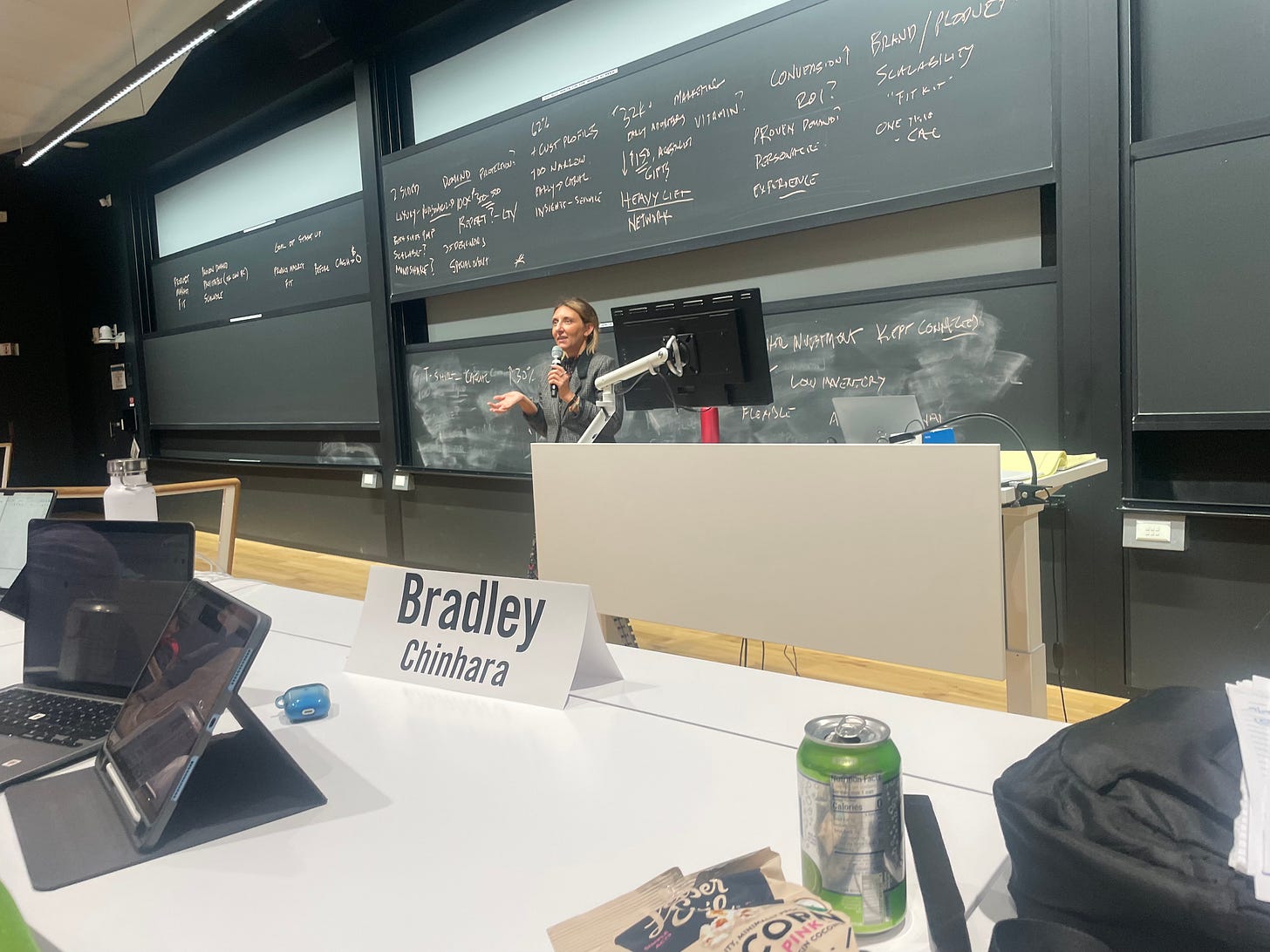Caught My Attention, Ed. 4: Teaching at Hahhvahhd, Shopify Editions, and Series A's
Last week it was hard to get something out. I was teaching at both Harvard Business School and (my alma mater) Harvard College hoping to impart some hard-earned wisdom from my days running Bow & Drape, and our longer-than-average struggle to find product market fit. For reference, it took us from mid-2011 until mid 2014 to hit on what would be our business, the cheeky customization sweatshirts that we sold to millions and were donned by major celebrities like Serena Williams, Reese Witherspoon, Halle Berry, Mindy Kaling and more.
HBS wrote a case about this journey, and the many missteps we took along the way to uncovering our winning product. I figure you don’t need a quarter million dollar education to get the highlights of my lessons, so here they are, in no particular order:
Product Market Fit is about finding a profitable product that you cannot market to customers fast enough. As one student said, “the snowball stops pushing itself”
When trying to first understand who your customer might be, don’t talk to them (especially about your solution) - listen. Listen to their lives, how they spend their money and time, their frequency of certain behaviors, and try to understand how a product might fit in (not the other way around). Also, poll a diverse enough group to get meaningful, unbiased feedback. Apps like Pollfish allow you to survey thousands of participants in a certain range of demographics literally overnight, for example. Don’t rely on friends and your mom, like I did!
Test and iterate until the data screams at you. We tested different silhouettes for over a year before we found that women wanted more casual attire (not dresses and formal wear, which is what our early surveys indicated to us). Once we hit on launching the sweatshirt, the data was clear: it was 30% of our sales the first quarter (as one SKU) and before we knew it, thousands and thousands were ordered and it became clear that virality had taken hold.
Good founders don’t have an ego about their solution, and are relentless about being proven wrong until they are proven right. To our credit, we didn’t quit hunting until we happened upon our soft, chic sweatshirts.
Once you hit on PMF (product market fit), don’t capitulate - go full steam ahead. One misstep we made was to continue launching our new collections as planned, instead of scrapping them and running hard right away at the sweatshirts. In hindsight, it is fair to say we were “mitigating risk” by not going full hog into sweatshirts and launching more dresses, but I submit we knew we had a hit and should have been unafraid to run at it. Startups are a race against time; eventually, in enough time, you run out of money.
Ironically, though startups are a race against time, they take time. We didn’t sell Bow & Drape until 2019. That’s almost eight years after I started tinkering. Every overnight success story takes more time than you realize. Success is really more about resilience than anything else.
There you have it. Free education by subscribing to I’ll Buy It…
A couple other noteworthy callouts that came across my desk:
Shopify Editions came out. There are many enhancements to product categorization, search, and checkout, including the ability to bundle and create limitless SKUs via API and the ability to put ShopPay on any checkout anywhere. The news was also a warning shot for companies building things like subscription apps in their ecosystem. Shopify continues to make its storefront the most powerful monolith platform in commerce. LINK.
A Higher Bar for Series A. I was speaking to an LP last week and it was clear the bar for Series A is incredibly high. Some estimate up to 25% of all venture went into seed the last two years. Additionally, many companies raised seed round extensions via insiders or new outside capital, and extended their runways to avoid raising these last two years. The result? More companies than ever going out for Series A this year, and I predict the bar is going to be WAY higher than people anticipate. If you’re at $3M ARR but it took you 2.5 years and $6M of inside capital to get there? No chance. As this LP said, “IRR is too important a metric for that kind of slowness.” Early stage companies beware.
Until next week!





